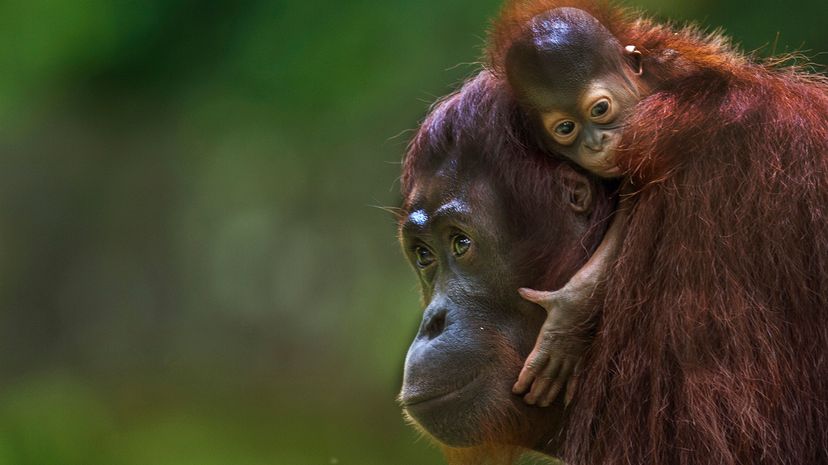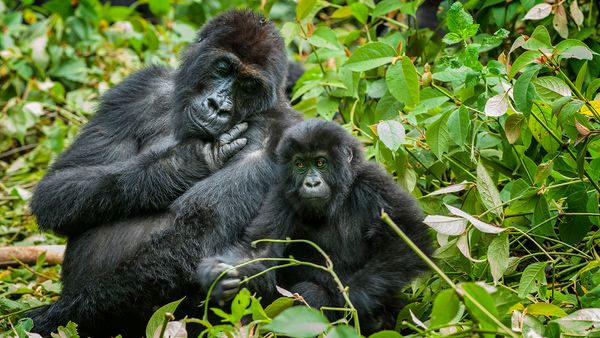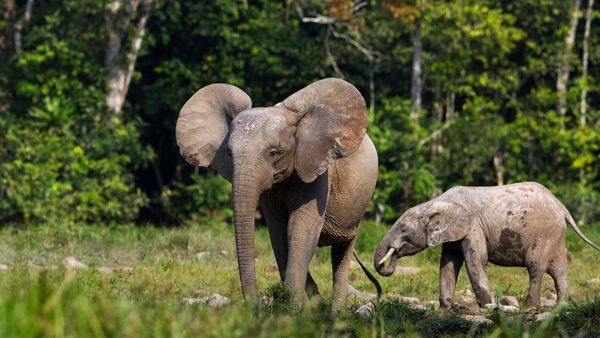Size and Physical Description
Sumatran orangutans boast the title of largest arboreal primates on the planet, with adult males typically reaching heights of 4.5 to 6 feet (1.4 to 1.8 meters) and weighing between 110 and 200 pounds (50 to 90 kilograms). Some of the largest adult male orangutans have even been recorded weighing up to 250 pounds (113 kilograms).
Females, on the other hand, are generally smaller, standing at 3 to 4 feet tall (0.9 to 1.3 meters) and weighing between 66 and 110 pounds (30 to 50 kilograms). Wild sumatran orangutans tend to weigh less than orangutans in captivity due to the difference in food availability.
They have long, reddish-orange fur which is sparse and has a fine texture. It can be difficult to distinguish Sumatran orangutans from Bornean orangutans as they have similarly colored hair and closely related physical features.
Adaptations for Tree Dwelling
This tree species of orangutan has developed several adaptations that enable them to thrive in their tree-dwelling lifestyle. Their strong arms, which are roughly 50 percent longer than their legs, allow them to traverse among the trees with ease.
Their fingers and toes are long and strong, providing them with a firm grip on branches. These primates also possess opposable thumbs, helping them to use tools and extract embedded food.
Their feet are shared very similarly to their hands, meaning they can use the appendages interchangeably when navigating the forest canopy.
Social Behavior
Unlike other apes, Sumatran orangutans are mostly solitary, with males being loners. They communicate using dozens of vocalizations, including long calls that can be heard up to 1.2 miles (1.9 kilometers) away.
Female orangutans, however, bond with their young and care for them until the young orangutans can survive independently, about six or seven years.



